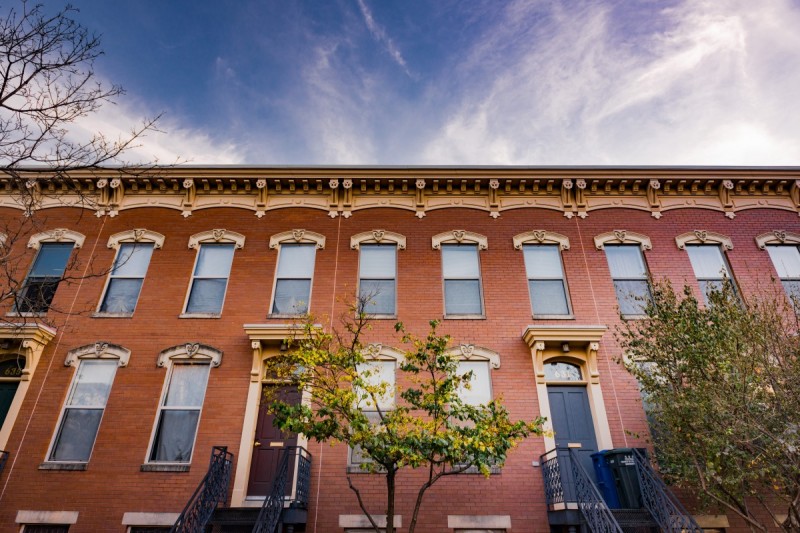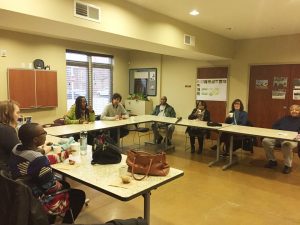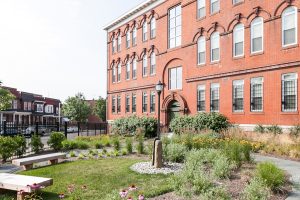The Townhomes on Capitol Hill are affordable no matter your income. Here’s how they work.
MARCH 22, 2017 | GREATER GREATER WASHINGTON
Our region is increasingly segregated by income. I live in a community where low-income people rent their homes without government subsidy, and they do so right next door to people who don’t need any housing assistance. You wouldn’t guess it by looking at it.
In preparing to write about my community, Townhomes on Capitol Hill, I asked my partner: “What do you think people reading this article really need to know?”
Without hesitation she replied, “That it’s a real community where you know your neighbors. It’s actually affordable and in a great location. And, though our homes aren’t luxury or super high-quality, they’re still really great when you consider everything.”
When I moved in a few years back, I was immediately struck by how diverse my neighborhood is in terms of age, race, lifestyle, work, and of course life experience. Several of my neighbors are retired or semi-retired, there a few are folks who have various types of disabilities, a few who live below federal poverty levels, a few who are young families, and a few are what an observer would casually consider millennials.
When I walk out my door, people say hello and ask how you are. My neighbor helped me install my washing machine. When I upgraded my backyard with some stone tiles, my green-thumbed neighbors and I discussed who could take the rose bush I no longer wanted.
Here’s how this place works
Townhomes on Capitol Hill—located just off of Barracks Row between 6th and 7th Street SE, and Virginia Avenue and Ellen Wilson Place SE—is a mixed-income cooperative initially funded by a $25 million grant through the Department of Housing and Development’s HOPE VI program in the late-1990’s.
It’s a member-operated cooperative, meaning everyone owns a share of the overall property, and when they leave they sell their share back to the cooperative. The co-op has a 99-year land lease from the DC Housing Authority (DCHA). Due to its unique structure, the cooperative does not require any ongoing funding or subsidies to operate sustainability.
There are 134 units, more than half of which are reserved for households making less than $54,300 (which is half of DC’s Area Median Income of $108,600). A quarter are reserved for households falling below 25% of AMI ($27,150), a quarter between 25-50% of AMI ($27,150-$54,300), and half between 50-115% of AMI ($54,300–125,976).
If we compare this model to DCs current Inclusionary Zoning (IZ) requirements—where roughly 10% of the units go to families earning 0-60% of AMI. The Townhomes model completely knocks it out of the park with 57.5% of our units set aside for those same households, while 87.5% of our units are also set aside for households below AMI ($108,600 in 2016).
Our homes were cleverly designed and constructed to blend into the rest of Capitol HIll’s architectural styles so you won’t find us unless you look real hard. All the units are constructed out of the same materials and finishes such that no one unit or group of units are substandard, no matter what the income level of the occupant. There are no “poor doors”. In fact, Townhomes is an entire city block made of multiple rowhouse-style structures so everyone gets their own frontdoor. We even have a community center that serves as a center point for programs we run for our own membership and increasingly residents in the surrounding area.
It’s actually affordable
DC’s median rent for a one bedroom is roughly $2,100, and for a two bedroom it’s $2,744. That means that if you’re single, you need to make $100,800 per year to afford anything built recently or in a “good” location, and if you need two bedrooms, your household needs to make $131,712.
But in 2016, our rent ranged from $110 per month to $2,716 depending on the resident’s income, the number of people in their household, and the size of their unit. Because all of us pay relative to our household income, here’s little chance of being priced out or displaced by the market. Each year, everyone “recertifies”—essentially updating their household income based on paystubs and tax records—to determine their new payments.
Despite having monthly payments that are all below Market Rate across the board, we are able to support a staff of 6.5 people who help keep the community moving forward day-to-day. We have a Community Manager, Administrative Assistant, Resident Services Manager, Activities Coordinator, two maintenance technicians, and a part-time cleaner.
Everyone who lives here understands the deal: Those of us with more resources are essentially subsidizing those of us with fewer. Our members at the bottom seem to appreciate it, and our members at the top have never once complained (to my knowledge).
Why isn’t there more?
I am continually struck by the fact that there is a completely viable housing model in the middle of our nation’s capital and no one seems aware. I’ve begun talking to housing-focused researchers and specialists at various organizations around DC and not one has known anything more than our former name.
Let’s think about it this way: If we can house over 250 people with incomes ranging from roughly $0-350,000 on the same block, in the same exact quality homes, without any ongoing subsidies or incentives, and still have excess capital each year (for improvements, etc.), then why aren’t we building more? Why aren’t there more mixed-income communities just like this, or better?


